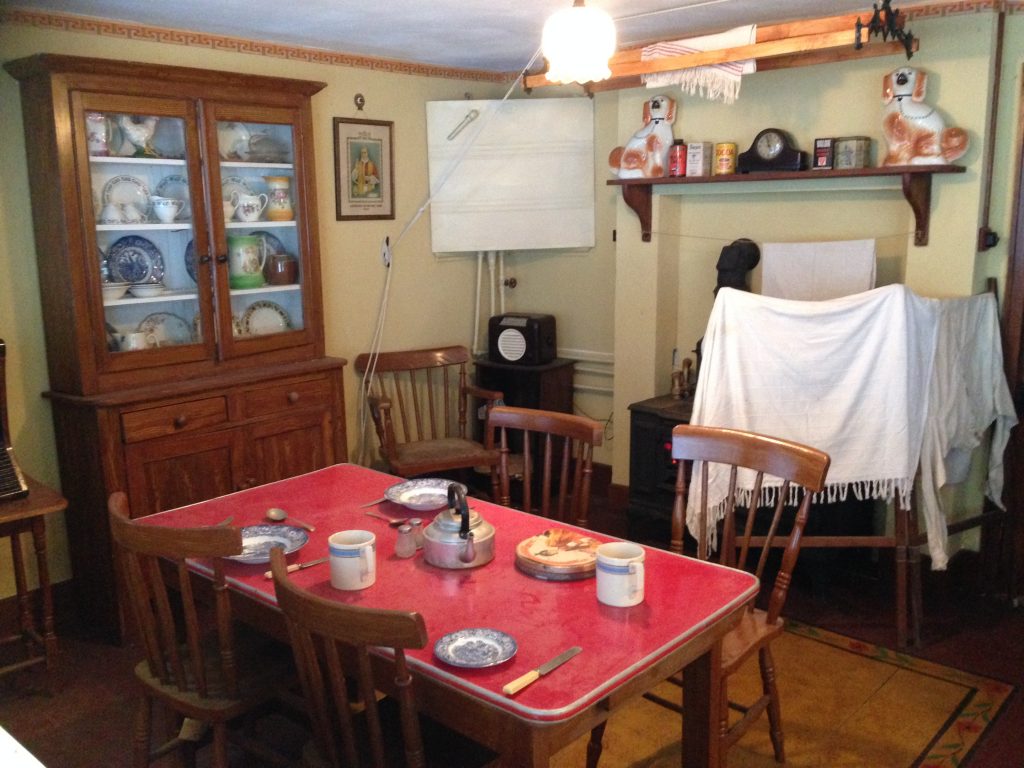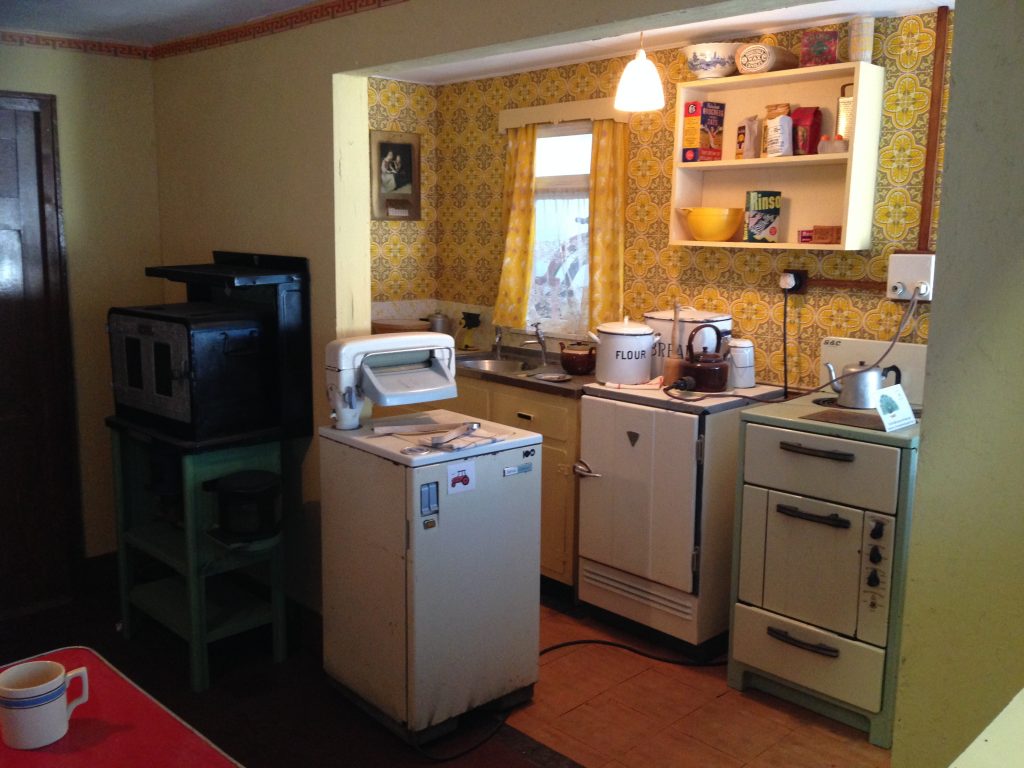Continuing on with my mission to survey the electrical appliances surviving in Irish museum collections, I recently visited the Irish Agricultural Museum in Wexford. Now, while an agricultural museum is probably not the first place you would think of when looking for domestic objects, but alongside the tractors and agricultural implements (of which they have an excellent collection), they also have a fine section on the Irish rural domestic interior.
The Irish Agricultural Museum is located outside of Wexford town in the grounds of Johnstown Castle, which are worth a visit for themselves, especially on a sunny day. Originally owned by a Norman family, the Esmondes, the estate is now owned by Teagasc, the Irish Agricultural and Food Development Authority, and it also houses one of their research facilities. The Agricultural Museum is housed in the old stable courtyard, which is enlivened by the local population of peacocks and peahens.
The highlight of the domestic collection display for me was the reconstruction of Irish country kitchens from the 19th and 20th centuries, particularly the post-war kitchen. This gallery puts the post-war kitchen in context, as you can see the development of kitchen tools and appliances over the years, but can also see what stayed the same, particularly the continuity of the country dresser, decorative ceramics and the Sacred Heart picture as a devotional focus (albeit with an electrical bulb instead of an oil lamp). Each of these kitchens is both a space for cooking and eating, as well as sitting and talking, although the focus of how they are laid out changes from the early hearth to the table in the centre of the room (and later the television set).

Mid-century Irish farmhouse kitchen reconstruction at the Irish Agricultural Museum
The post-war kitchen reconstruction showcases the introduction of electricity and running water as part of the rural electrification scheme, and is furnished with a number of electrical appliances as well as the use of new materials such as Formica. The fireplace is furnished with a stove for heating, connected to a hot water boiler, and the cooking has been moved over to a side section, separating the cooking and baking into a separate room from eating and conversation. The kitchen is well furnished with a single tub washing machine and a fridge, as well as a three plate cooker and a selection of small appliances for speeding up small jobs such as toasting bread. The Servis Compact washing machine was included as object number 96 in A History of Ireland in 100 Objects – this model was manufactured in the Wilkins & Mitchell factory in Staffordshire, England, although there was also a Servis factory in Whitehall, Dublin making washing machines in the 1960s. The Ireland in 100 Objects panel notes the role that washing machines played in women’s lives before the advent of organised feminism in Ireland. Mamo McDonald, Past President of the Irish Countrywomen’s Association (also interviewed for this project) is quoted as saying that the washing machine was the invention that most changed her life.

Mid-century Irish farmhouse kitchen reconstruction at the Irish Agricultural Museum
I also spent some time going through the collection of material not on show, which, as with most museums, makes up the bulk of their collection. This material includes advice manuals on electricity, including one owned by the museum’s founder, Austin O’Sullivan, which supports the perception that electrical wiring became something that the well-read amateur could do, particularly in areas with a shortage of trained electricians. Listen to this interview with Austin O’Sullivan talking about some of the washing machines in the collection: Culture File.
